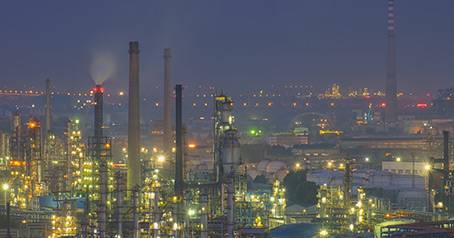Oct . 05, 2024 17:45 Back to list
Types and Applications of Control Valves in Industrial Systems
Control Valve Types and Applications
Control valves are essential components used in industrial processes for regulating fluid flow, pressure, temperature, and other key parameters. They play a crucial role in maintaining efficiency, safety, and reliability in various applications, including oil and gas, water treatment, chemical processing, and HVAC systems. Understanding the different types of control valves and their specific applications can help engineers and operators choose the right valve for their needs.
Types of Control Valves
1. Globe Valves Globe valves are designed with a spherical body shape and are favored for their ability to provide excellent flow control. These valves are ideal for throttling applications, where precise regulation of flow is necessary. They are commonly used in steam, water, oil, and gas services.
2. Ball Valves Ball valves feature a spherical closure element that can rotate to control flow. They are known for their durability and high flow capacity. Ball valves are typically used for on/off applications but can also be utilized for throttling. Their quick operation and tight sealing make them suitable for applications in the oil and gas sector, as well as in water systems.
3. Butterfly Valves Butterfly valves consist of a rotating disc that regulates flow. They are lightweight, cost-effective, and require less space compared to other valve types. These valves are commonly used in large pipelines where quick shutoff is needed. Their applications include water supply, wastewater treatment, and HVAC systems.
control valve types and applications

4. Diaphragm Valves Diaphragm valves use a flexible diaphragm to open and close the flow path. They are particularly effective in applications that involve corrosive or dirty fluids as they prevent contact between the fluid and the valve internals. Diaphragm valves are widely used in pharmaceutical, food processing, and chemical industries.
5. Check Valves Unlike other control valves, check valves are automatic valves that allow fluid to flow in one direction only. They prevent backflow, which can lead to contamination and damage in a system. Applications for check valves are prevalent in water and wastewater systems, as well as in various industrial processes.
Applications of Control Valves
Control valves are instrumental across numerous industries. In the oil and gas sector, they control the flow of crude oil, natural gas, and refined products, ensuring safe and efficient transport. In chemical processing, they regulate reactions and maintain optimal conditions for production. Water treatment facilities rely on control valves to manage the treatment process, ensuring safe and potable water supply.
Moreover, in HVAC systems, control valves help manage heating and cooling processes, contributing to energy efficiency and comfort in residential and commercial buildings.
In conclusion, the choice of control valve type greatly depends on the specific application and operating conditions. By understanding the different types and their appropriate uses, engineers can enhance system performance, reduce energy consumption, and ensure reliability in their operations.
-
Why Metric Trapezoidal Thread is Ideal for Precision Motion ControlNewsAug.05,2025
-
The Unique Properties of a Block of Granite for Industrial UseNewsAug.05,2025
-
The Role of Flanged Y Strainers in Preventing Pipeline ClogsNewsAug.05,2025
-
The Importance of Regular Calibration for Master Ring GagesNewsAug.05,2025
-
How a Cast Iron Surface Table Enhances Accuracy in ManufacturingNewsAug.05,2025
-
Comparing Different Check Valve Types for Optimal Flow ControlNewsAug.05,2025
Related PRODUCTS









